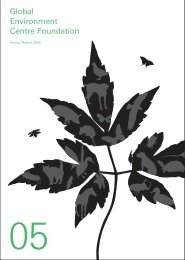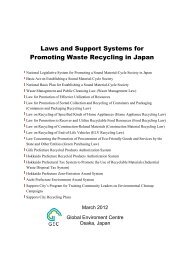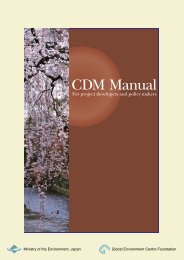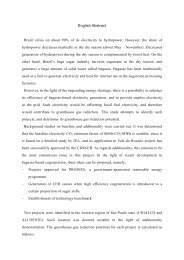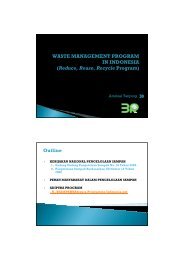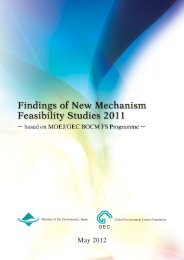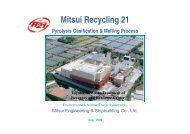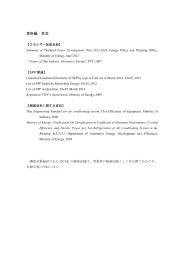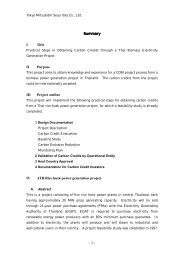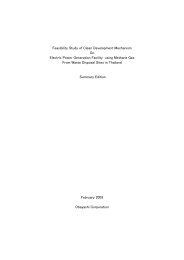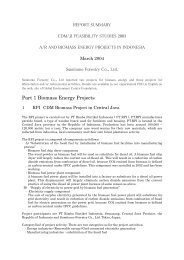PDF File - GEC
PDF File - GEC
PDF File - GEC
You also want an ePaper? Increase the reach of your titles
YUMPU automatically turns print PDFs into web optimized ePapers that Google loves.
If LFG is used for generation of electric or heat energy for export to a grid and/or to a nearby industry,<br />
or used on-site realistic and credible alternatives should also be separately determined for:<br />
(a) Power generation in the absence of the project activity (P1-P6);<br />
(b) Heat generation in the absence of the project activity (H1-H7).<br />
From the list of alternatives, all 4 example PDDs narrow down the list of plausible alternatives to the<br />
BAU and project scenarios.<br />
Step 2: Identify the fuel for the baseline choice of energy source taking into account the national<br />
and/or sectoral policies as applicable<br />
The project participants should demonstrate that the identified baseline fuel is available in<br />
abundance in the host country and there is no supply constraint. In case of partial supply constraints<br />
(seasonal supply), the project participants may consider an alternative fuel that result in lowest<br />
baseline emissions during the period of partial supply. Detailed justification shall be provided for the<br />
selected baseline fuel. As a conservative approach, the lowest carbon intensive fuel such as natural<br />
gas through out the period may be used.<br />
Step 2 is applied in all 4 example cases, as this type of projects usually brings considerable financial<br />
benefits. In one case, the simple cost analysis is chosen as the appropriate analysis method in Step<br />
2a, whereas the other 3 cases opt for the benchmark analysis. The simple cost analysis can be applied<br />
when the only financial benefit of the project activity is the CER revenue. In other words, project<br />
activities that only collect and flare landfill gas can apply the simple costs analysis method. Project<br />
activities that involve electricity generation or sale of produced landfill gas should apply either the<br />
benchmark analysis or the investment comparison analysis. In the 3 cases that apply the benchmark<br />
analysis, government bond rates or interest rates provided by local banks are used as the benchmark<br />
value.<br />
Step 3: Step 2 and/or step 3 of the latest approved version of the additionality tool<br />
Step 2 and/or step 3 of the latest approved version of the additionality tool shall be used to assess<br />
which of these alternatives should be excluded from further consideration (e.g. alternatives facing<br />
prohibitive barriers or those clearly economically unattractive).<br />
2 of the example PDDs apply Step 3 as well, considering technical barriers, mechanism barriers, policy<br />
barriers and organization and implementation barriers. Availability of securing necessary financial<br />
resources is also listed as one of the barriers.<br />
Step 4: Common practice analysis<br />
Where more than 1 credible and plausible alternative remains, project participants shall, as a<br />
conservative assumption, use the alternative baseline scenario that results in the lowest baseline<br />
emissions as the most likely baseline scenario. The least emission alternative will be identified for<br />
each component of the baseline scenario. In assessing these scenarios, any regulatory or contractual<br />
requirements should be taken into consideration.<br />
In all 4 cases, the PDDs simply make a statement that there are no or limited occurrences of similar<br />
activities in the host country. Only 1 PDD provides a list of landfills in the host country with an<br />
indication if those landfills have gas collection system in place or not.<br />
103



